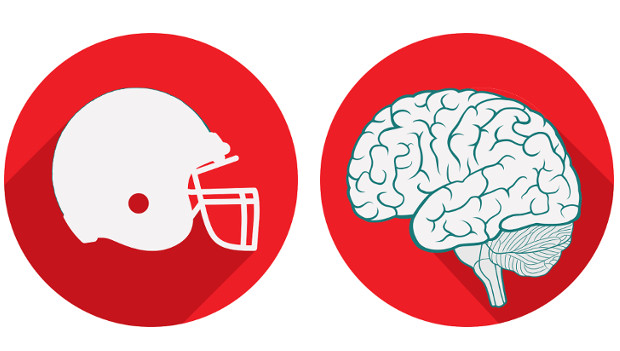A sure-fire prediction for Super Bowl LII

We don’t know who will win the 52nd Super Bowl, but thanks to research, we’re certain repeated head hits cause lasting risks
by Eric B. Larson, MD, MPH, Kaiser Permanente Washington Health Research Institute (KPWHRI) executive director, and Kaiser Foundation Health Plan of Washington vice president for research and health care innovation
On February 4, Americans will gather for an annual midwinter tradition: the Super Bowl party. Even if you don’t follow the Philadelphia Eagles, the New England Patriots, or the sport in general, you may be looking forward to the halftime extravaganza or the million-dollar ads that debut throughout the game. Amid the fun, though, you might hear your friends and game commentators discuss a more serious topic: head injuries.
For the past decade or so, awareness of the long-term effects of traumatic brain injuries has grown. Physicians and athletes link symptoms such as loss of impulse control, depression, and short-term memory loss to repeated head trauma. We hear about longer-term effects such as dementia, so parents want to know the risks to their children who play sports. Here’s what we know so far.
The connection between collision sports and long-term harms
Solid evidence connects American football with chronic traumatic encephalopathy (CTE), a degenerative condition with symptoms that range from irritability to long-term cognitive impairment to suicidal impulses.
CTE results from repeated hits to the head, which is why researchers study CTE in people who have been in military combat and athletes in collision sports such as hockey, rugby, and American football. CTE can be accurately diagnosed only after death, because it requires a brain autopsy.
In summer 2017, the Journal of the American Medical Association (JAMA) published a paper connecting football and CTE. Researchers led by Ann C. McKee, MD, Boston University School of Medicine, studied 202 football players who had died and whose relatives allowed their brains to be examined. Among the athletes who had played professional football, 86% had CTE.
KPWHRI research on brain injury
This JAMA paper and other studies have increased our awareness about the dangers of repetitive head injuries, even mild hits that do not cause concussion. Many of these studies, however, rely on brains donated by relatives of athletes who suspected they might have had CTE. Working with this selected sample means that the researchers could be more likely to find evidence of harms than if they studied a random selection of athletes’ brains.
We don’t know what percent of all football players actually have or will develop CTE. Because of the limitations to studies so far, we need more in-depth research on the connections between brain injury and neurodegenerative disease in later life. A useful approach is studying a more general population of people.
That’s the kind of work we’re doing in the Adult Changes in Thought (ACT) study that I co-lead with KPWHRI Affiliate Investigator Paul Crane, professor at the University of Washington School of Medicine.
Our ACT study maintains an enrollment of about 2,000 Kaiser Permanente members over age 65, checking in with them over time to see how their life experiences, behavior, and environment affect their brain health later in life. Although none of our study participants show signs of cognitive impairment when they first enter the study, we’ve found that those who have had falls and head injuries are more likely to develop deposits in their brains called “Lewy bodies” — an abnormality that occurs with Parkinson disease and can cause dementia.
These findings are consistent with a number of other studies showing that football players and others who have frequent head traumas may be at elevated risk for health effects such as memory loss, suicidal behavior, and dementia.
Protecting your own head
Just as sports medicine experts are learning how to protect athletes’ brains, we at KPWHRI are learning how the general population can delay or prevent cognitive decline. Take a look at these steps you can take now to reduce your own risk.
In particular, there’s a lot you can do to reduce your risk of falling. Such prevention is especially important for older adults. We have found that once a fall occurs, it’s often a sign that a person is at risk for a second and more injurious fall.
Meanwhile, our researchers will continue to look for ways to avoid falls and protect the brain. Some of our current work includes:
- A partnership with the Allen Institute for Brain Science to identify structural and molecular changes in the brain after traumatic brain injury.
- A collaboration with Mt. Sinai Hospital to investigate links among military service, traumatic brain injury, and dementia.
I’m glad that the consequences of head hits are now part of our Super Bowl discussions — along with armchair quarterbacking about game strategies, rating ads, and swapping chili recipes. Enjoy the event, root for your team, hope for an injury-free game — and spread the word about how everybody can support their own brain health.
Learn more about Kaiser Permanente Washington Health Research Institute. Sign up for our free monthly newsletter.


